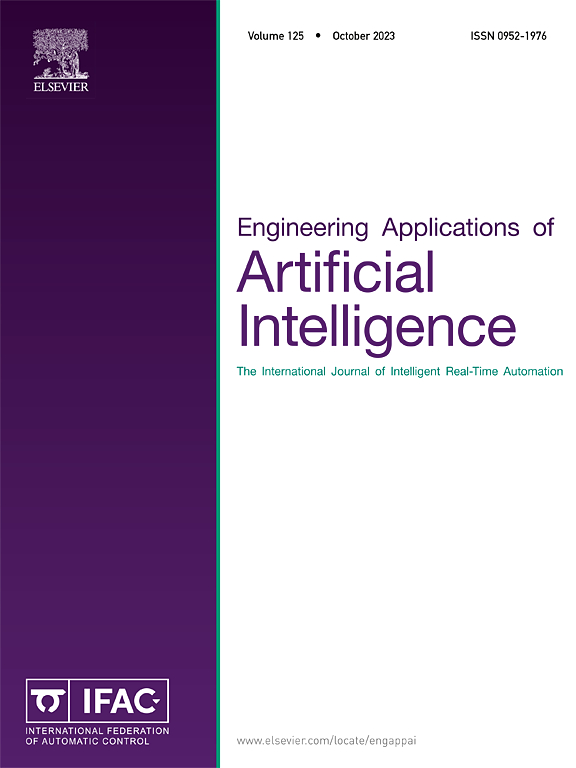一种基于图像增强和canynet的裂纹分割新框架
IF 8
2区 计算机科学
Q1 AUTOMATION & CONTROL SYSTEMS
Engineering Applications of Artificial Intelligence
Pub Date : 2025-07-02
DOI:10.1016/j.engappai.2025.111644
引用次数: 0
摘要
基于计算机视觉的裂纹检测高度依赖于分割过程的质量,并且由于其复杂性仍然是一项具有挑战性的任务。为了提高分割效果,本文提出了一种结合图像增强方法和CannyNet的图像分割框架。采用风格转移进行图像增强。为了提高裂缝图像的识别能力,提出了一种新的裂缝图像分割深度神经网络——CannyNet。此外,为了提高CannyNet预测的精度,采用贝叶斯优化方法对网络超参数进行优化。利用四个开源数据集和一个新构建的数据集进行实验测试,验证了所提出的裂缝分割框架。对比结果表明,风格迁移方法增强了分割模型的泛化能力,CannyNet的分割效果更好。贝叶斯优化策略能够优化canynet的结构,从而提高裂缝分割的效果。本文章由计算机程序翻译,如有差异,请以英文原文为准。
A novel framework for crack segmentation using image augmentation and a CannyNet
Computer-vision based crack detection is highly dependent on the quality of the segmentation process and remains a challenging task due to its complexity. In this paper, a framework for image segmentation that incorporates image augmentation method and a CannyNet is proposed to improve segmentation results. The style transfer is employed for image augmentation. A novel deep neural network for crack image segmentation, named CannyNet, is proposed to enhance the recognition capability for tiny cracks. Moreover, to improve the precision of CannyNet predictions, Bayesian optimization approach is employed to optimize network hyperparameters. The proposed framework for crack segmentation was verified using four open-source dataset and a new constructed dataset by conducting experimental test. A comparison of segmentation models indicates that style transfer method enhances the model's generalization, and the CannyNet demonstrates superior performance. The Bayesian optimization strategy is capable of optimizing the architecture of the CannyNet, thereby improving crack segmentation results.
求助全文
通过发布文献求助,成功后即可免费获取论文全文。
去求助
来源期刊

Engineering Applications of Artificial Intelligence
工程技术-工程:电子与电气
CiteScore
9.60
自引率
10.00%
发文量
505
审稿时长
68 days
期刊介绍:
Artificial Intelligence (AI) is pivotal in driving the fourth industrial revolution, witnessing remarkable advancements across various machine learning methodologies. AI techniques have become indispensable tools for practicing engineers, enabling them to tackle previously insurmountable challenges. Engineering Applications of Artificial Intelligence serves as a global platform for the swift dissemination of research elucidating the practical application of AI methods across all engineering disciplines. Submitted papers are expected to present novel aspects of AI utilized in real-world engineering applications, validated using publicly available datasets to ensure the replicability of research outcomes. Join us in exploring the transformative potential of AI in engineering.
 求助内容:
求助内容: 应助结果提醒方式:
应助结果提醒方式:


